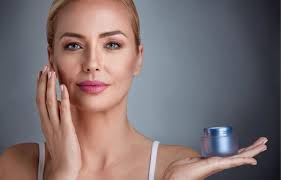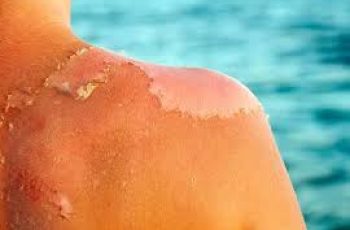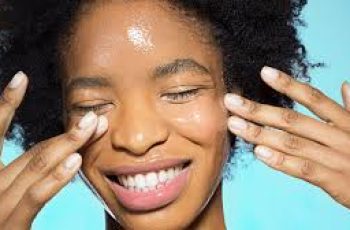
Tretinoin 101: An In-Depth and Comprehensive Guide
Tretinoin is a powerful and widely used medication that belongs to a class of compounds known as retinoids, which are derivatives of vitamin A.
These compounds are renowned for their ability to profoundly impact skin health and appearance by influencing cell behavior at a fundamental level.
According to the American Academy of Dermatology Association (AAD), tretinoin is commonly prescribed to treat various skin concerns such as acne, uneven skin tone and texture, and the early signs of aging like fine lines and wrinkles.
It was first approved by the U.S. Food and Drug Administration (FDA) back in 1971, marking a milestone as the first retinoid approved for topical acne treatment, and since then, it has remained a cornerstone in dermatological care.
What Makes Tretinoin So Special?
Dr. Julia Schwartz, a dermatologist based in Dorado, Puerto Rico, explains that tretinoin is one of the most extensively studied and well-known prescription retinoids available today.
While there are many over-the-counter (OTC) retinoids, such as retinol, tretinoin stands out for its potency and clinical efficacy.
Retinol, for example, is a milder, less concentrated retinoid often found in many OTC skincare products. Although retinol has benefits, it is typically about ten times less potent than tretinoin.
This means that while retinol can improve the skin, it usually requires a longer period to show noticeable effects, and the results might not be as dramatic or fast-acting as those seen with tretinoin.
Understanding How Tretinoin Works
Dr. Lisa Chipps, a dermatologist from Beverly Hills, highlights the key mechanism through which tretinoin works: it accelerates the skin’s natural cell turnover process.
This acceleration means that the skin sheds dead cells more quickly, revealing fresher, healthier skin underneath.
By promoting this faster renewal cycle, tretinoin helps to unclog pores, effectively preventing the buildup of debris that leads to acne.
Additionally, tretinoin stimulates the production of collagen, a critical structural protein in the skin’s deeper layers. Collagen is essential for maintaining the skin’s firmness and elasticity.
Over time, collagen production declines naturally with age, which contributes to wrinkles and sagging skin.
By boosting collagen, tretinoin not only improves acne scars but also reduces fine lines and wrinkles, making it a valuable anti-aging tool.
Tretinoin is available in several forms, including creams, gels, and lotions, and it is marketed under various brand names such as Retin-A, Renova, and Atralin.
The medication is offered in different strengths ranging from 0.01% to 0.1%, allowing dermatologists to tailor treatments according to individual skin needs and tolerances.
It can also be used in combination with other skincare ingredients like benzoyl peroxide, topical antibiotics, niacinamide, and hyaluronic acid to enhance its efficacy or reduce side effects.
The Wide-Ranging Benefits of Tretinoin
Tretinoin is highly versatile and can address multiple skin concerns, making it a favorite among dermatologists and patients alike.
Acne Treatment
Whether your acne is predominantly comedonal—meaning clogged pores—or more inflammatory, characterized by red, swollen pimples filled with pus, tretinoin is often the first-line prescription.
Board-certified dermatologist Dr. Kristina Collins explains that tretinoin increases cell turnover to clear the pores and reduces inflammation, which helps to decrease both the number and severity of acne lesions.
It works by keeping the pores open and minimizing redness and swelling associated with active breakouts.
Reducing Hyperpigmentation and Sun Damage
Beyond acne, tretinoin has a proven ability to brighten skin and even out discoloration.
Many individuals suffer from hyperpigmentation issues such as lentigines (sun spots), melasma (patches of darker skin), or post-inflammatory hyperpigmentation resulting from acne scars.
By accelerating exfoliation, tretinoin helps shed damaged, pigmented skin cells and promotes the growth of new, evenly pigmented skin.
Studies also show that tretinoin can significantly improve signs of photodamage—premature aging caused by sun exposure—by promoting skin renewal and repair.
Anti-Aging Effects
Since its initial FDA approval, tretinoin’s role has expanded beyond acne treatment to include anti-aging benefits.
By stimulating collagen synthesis, it restores the skin’s structural integrity, reducing the appearance of fine lines and wrinkles.
However, it’s important to note that these benefits require consistent and long-term use, typically over a period of three to twelve months, for visible improvements to manifest.
Different Formulations of Tretinoin and Choosing the Right One
Tretinoin is formulated as gels, creams, and lotions, each offering unique benefits depending on skin type and treatment goals:
Gel:
Gel formulations are often preferred by people with oily skin because the product absorbs quickly and penetrates deeply.
However, gels may contain alcohol or other drying agents, which can exacerbate dryness and irritation.
To counteract this, dermatologists often recommend applying a non-comedogenic moisturizer after the gel to maintain hydration.
Cream:
Creams are thicker and provide more moisture, making them a better option for individuals with dry or combination skin, or for those using tretinoin primarily for anti-aging purposes.
Cream bases tend to be less irritating and help balance the drying effects of tretinoin.
Lotion:
Lotions strike a balance between gels and creams and can be especially beneficial for sensitive skin.
Products like Altreno lotion include nourishing ingredients such as hyaluronic acid and glycerin that help soothe and hydrate the skin while delivering tretinoin.
Studies have found lotions may cause less irritation and are often preferred by users.
Side Effects to Expect and How to Manage Them
Because tretinoin is a potent medication, it can cause side effects, especially when first starting treatment. Common issues include dryness, redness, peeling, and irritation.
Dermatologist Julia Schwartz explains that many patients experience an initial “purging” phase where acne may temporarily worsen as the skin adjusts to increased cell turnover.
This is a normal reaction and usually resolves within a few weeks.
To minimize irritation, it’s advisable to start with lower concentrations or less frequent applications, such as every other night or every two nights.
Gradually increasing usage as the skin builds tolerance can improve comfort and treatment adherence.
Using moisturizers rich in hydrating ingredients such as hyaluronic acid or niacinamide can also help alleviate dryness and soothe irritated skin.
It’s important to note that people with darker skin tones should be particularly cautious, as irritation can lead to post-inflammatory hyperpigmentation, making the skin darker in irritated areas. Starting treatment slowly, maintaining good hydration, and consulting with a dermatologist can help prevent this.
Interactions With Other Products
If you are using tretinoin, avoid combining it with other potentially irritating products such as those containing high levels of alcohol, strong exfoliants like alpha-hydroxy acids (AHAs), or abrasive cleansers.
Ingredients like benzoyl peroxide, salicylic acid, and sulfur can also increase irritation, though sometimes doctors may prescribe tretinoin formulations combined with benzoyl peroxide for specific cases.
Safety During Pregnancy and Breastfeeding
Tretinoin is not recommended during pregnancy or while breastfeeding.
While topical tretinoin has lower systemic absorption compared to oral retinoids such as isotretinoin (commonly known as Accutane), there is insufficient evidence proving its safety in pregnancy.
Oral retinoids are known to cause serious birth defects and must be strictly avoided by pregnant women or those planning to conceive.
Always consult a healthcare professional before starting tretinoin if you are pregnant, trying to conceive, or nursing.
Alternatives to Tretinoin
If tretinoin isn’t suitable for you, several other retinoids can provide similar benefits with varying potency and side effect profiles:
Retinol:
A gentler, OTC retinoid that’s effective for mild acne and early signs of aging. Retinol is less irritating but also less potent than tretinoin, requiring longer use for visible results.
Adapalene:
Initially prescription-only, adapalene is now available OTC in lower strengths. It is similar to tretinoin but tends to cause less irritation.
While primarily used for acne, it may also improve signs of sun damage and aging, though it is less studied for these uses.
Tazarotene:
A stronger prescription retinoid than tretinoin, with a higher likelihood of irritation. It is contraindicated for women who are or may become pregnant due to potential risks of birth defects.
Incorporating Tretinoin into Your Skincare Routine
Experts recommend starting slow when introducing tretinoin to your skincare regimen.
Begin by applying a small amount to a limited test area for about one to two weeks to ensure there’s no allergic reaction.
Afterward, you can gradually extend use to the entire face, while maintaining communication with your dermatologist to monitor progress and manage any side effects.
Use only a pea-sized amount to cover the face, avoiding sensitive areas such as the eyes, lips, and nostrils.
Because tretinoin increases sun sensitivity by thinning the skin’s outer layer, it should always be applied at night.
Morning application can lead to degradation of the product’s effectiveness and a higher risk of sun damage.
Frequency of Use
Consistency matters more than frequency. Many users find that applying tretinoin three times a week is effective and better tolerated than daily use.
Once the skin adapts, your dermatologist may advise increasing the frequency to nightly application.
Sun Protection is Essential
Because tretinoin makes your skin more vulnerable to sunburn, daily use of broad-spectrum sunscreen with a high SPF is critical.
Wearing protective clothing and minimizing direct sun exposure will help maximize tretinoin’s benefits and minimize risks.
Summary
Tretinoin is a highly effective prescription medication that has revolutionized the treatment of acne and signs of skin aging for over five decades.
By promoting faster cell turnover and increasing collagen production, it improves skin texture, reduces acne, lightens hyperpigmentation, and diminishes wrinkles.
While potent, it requires careful introduction to avoid common side effects like dryness and irritation.
With the right approach, including sun protection and moisturizing, tretinoin can become a transformative part of a skincare regimen for individuals of various skin types and ages.
Always work with a dermatologist to tailor your tretinoin use for the safest and most effective results.


